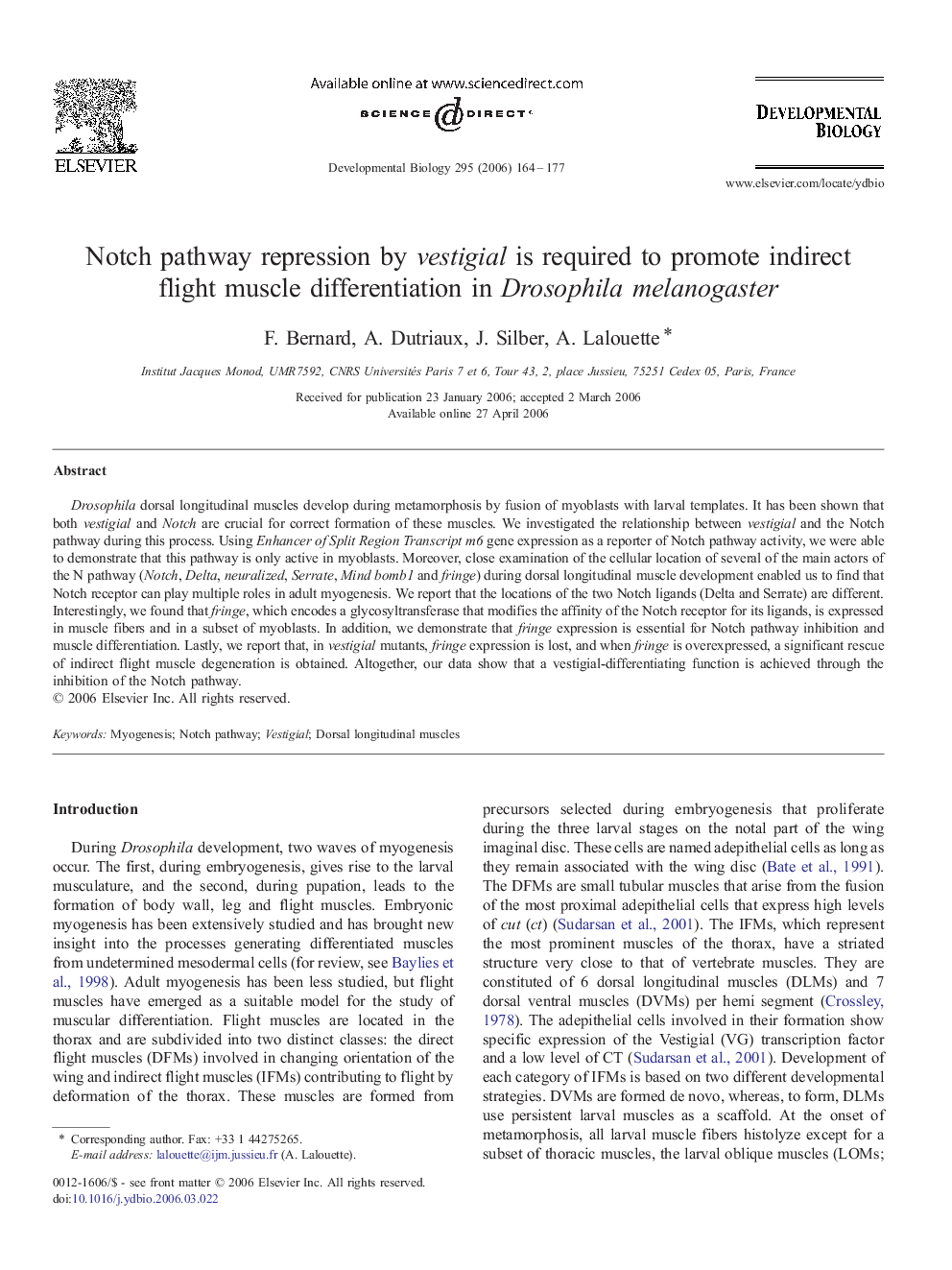| Article ID | Journal | Published Year | Pages | File Type |
|---|---|---|---|---|
| 2175891 | Developmental Biology | 2006 | 14 Pages |
Drosophila dorsal longitudinal muscles develop during metamorphosis by fusion of myoblasts with larval templates. It has been shown that both vestigial and Notch are crucial for correct formation of these muscles. We investigated the relationship between vestigial and the Notch pathway during this process. Using Enhancer of Split Region Transcript m6 gene expression as a reporter of Notch pathway activity, we were able to demonstrate that this pathway is only active in myoblasts. Moreover, close examination of the cellular location of several of the main actors of the N pathway (Notch, Delta, neuralized, Serrate, Mind bomb1 and fringe) during dorsal longitudinal muscle development enabled us to find that Notch receptor can play multiple roles in adult myogenesis. We report that the locations of the two Notch ligands (Delta and Serrate) are different. Interestingly, we found that fringe, which encodes a glycosyltransferase that modifies the affinity of the Notch receptor for its ligands, is expressed in muscle fibers and in a subset of myoblasts. In addition, we demonstrate that fringe expression is essential for Notch pathway inhibition and muscle differentiation. Lastly, we report that, in vestigial mutants, fringe expression is lost, and when fringe is overexpressed, a significant rescue of indirect flight muscle degeneration is obtained. Altogether, our data show that a vestigial-differentiating function is achieved through the inhibition of the Notch pathway.
